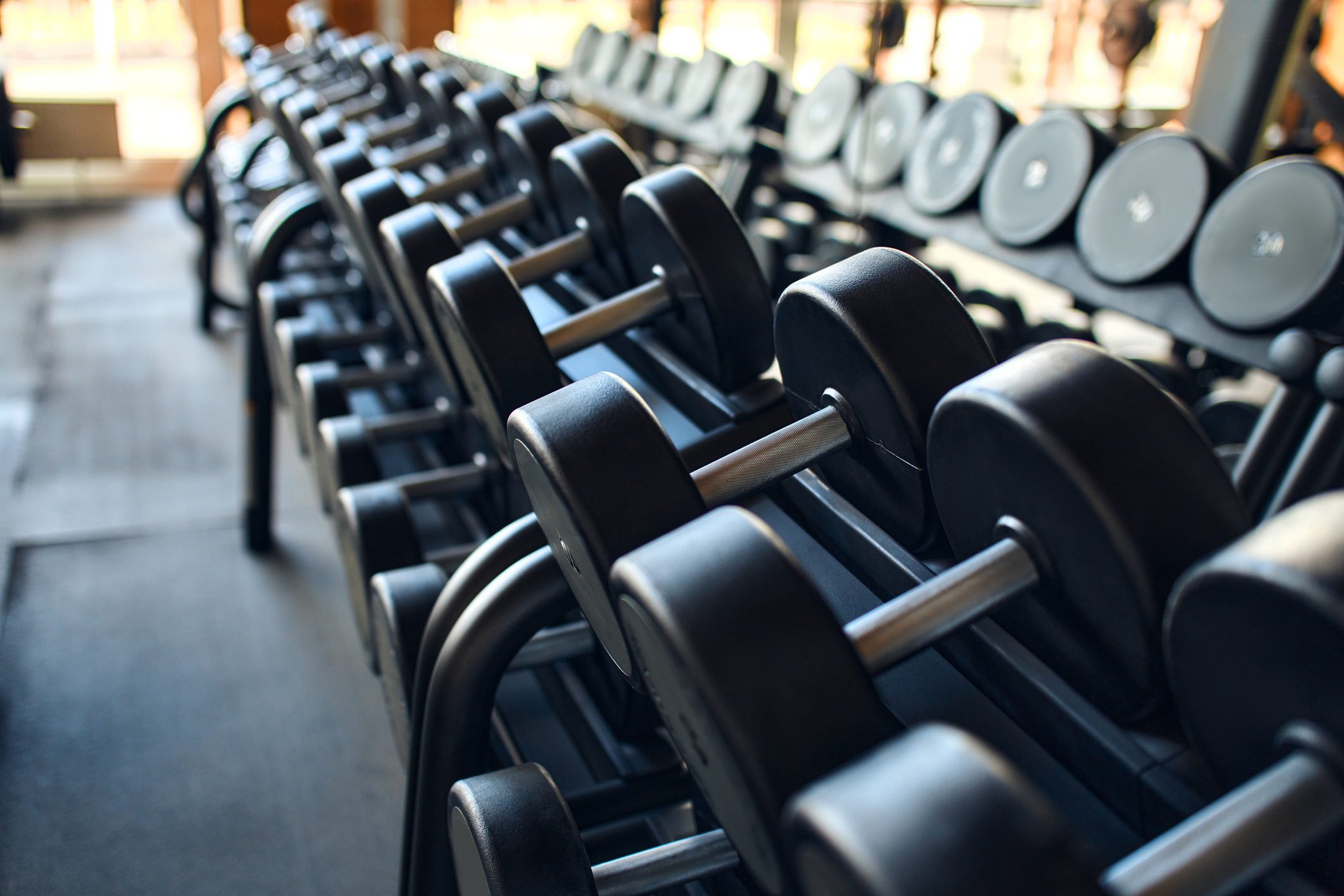After the COVID-19 pandemic, there’s been a drastic cultural shift towards remote work. In fact, according to the US Census Bureau, the number of people primarily working from home tripled between 2019 and 2021.
So it’s no surprise that given this major lifestyle shift, people are also working out at home more than ever. After all, why trek out to the gym when you can get the same great workout at home?

If you’re one of the many individuals who built a home gym or acquired a new assortment of fitness equipment over the past few years, you’re not alone. But what happens to your workout gear when it’s time to move into a new house or apartment? Should you attempt to move it all by yourself, or is it better to leave it to the experts?
Whether you’ve recently signed a new lease or just need to reorganize, declutter, or downsize your current home gym area, we’ve got you covered. Here’s everything you need to know about how to move heavy gym equipment:
Should you hire a moving company to move heavy gym equipment?
Depending on how much fitness gear you’ve got at home, it may make sense to hire a moving company for extra help. Professional movers often have lots of experience moving heavy gym equipment like treadmills, ellipticals, and weight machines. That means they’ll bring the knowledge, expertise, and tools required to move your home gym equipment into your new space (or storage unit) within a few hours.
On the other hand, it’s definitely doable to move a single treadmill or a small collection of free weights by yourself or with a friend or two. So long as you take the necessary precautions, use proper lifting form, and know your limits, you can potentially save yourself the money you would have spent hiring a moving company.
Related: Moving a Treadmill Without Injury
How much does it cost to move gym equipment?
Aside from safety and preventing injury, hiring a moving company to transport your heavy gym equipment can quickly become costly. That’s because some moving companies may charge a higher fee because gym equipment is heavier than typical furniture pieces. Plus, complex fitness machines tend to be expensive themselves. If damaged in transit, your fancy treadmill or Peloton bike is costly to replace.
Bottom line: The average cost of moving heavy gym equipment varies by region and by moving company. It’s in your best interest to shop around and speak to multiple movers before deciding.
Related: 9 Tips to Help Moving in Winter Months Less Annoying
How to Move Heavy Gym Equipment: Broken Down by Type
Finally, it’s time to pack up and transport your home gym equipment. If you’ve got a wide variety of fitness gear, it’s essential to know the best way to move each item. For example, you wouldn’t move a massive elliptical machine the same way you’d box up a few dumbbells or free weights.
To keep yourself and your stuff protected during the moving process, here’s the best way to move each type of heavy gym equipment you might have at home.
How to Move Free Weights
Depending on their size, dumbbells, kettlebells, medicine balls, and other free weights can typically be packed inside a sturdy moving box. Smaller weights can simply be packed into a box or carton with similar, lightweight items. Remember: You’ll want to ensure each box stays under 30 pounds.
You can also include smaller accessories like locks or barbell clamps inside each box for safekeeping. Wrap them up in paper padding so they don’t get crushed, and you’re good to go.
Weights that total over 30 pounds can be placed directly on the floor of your car or moving truck. If they’re not tightly packed, you can secure them with rope, straps, or bungee cords, so they don’t move or roll around in transit.
Safety tip: Even if you’re carrying lighter 5-10 pound dumbbells, keep a good grip on each weight and proceed with caution while moving around. Any excess packing clutter on the ground can lead to tripping or falling, and dropping a free weight on someone’s toe is the last thing you need on a hectic moving day.

How to Move Light Exercise Equipment
Fitness gear like benches, steps, plyometric boxes, and platforms are also pretty simple to move since they typically come in one piece. Just like free weights, you can easily lay these flat on the bed of your moving truck, van, or car to transport them to your new space.
Want some added protection? You can also wrap these items in paper padding or moving blankets before securing them with rope, straps, or bungee cords. That way, you won’t scuff up or scratch their exterior during the moving process.
Related: How to Pack Moving Boxes Efficiently
Lighter exercise equipment can also consist of portable ellipticals, foldable treadmills, stackable dumbbells, and other compact weight machines. In some cases, you can move these items all in one go. But the more intricate the equipment is, the higher the risk is of damaging it in transit. Plus, you could also lose track of small screws or add-on pieces like shelves or water bottle holders.
That’s why lighter gym equipment pieces like these can often be disassembled to make the moving process a lot easier. In these cases, it’s a good idea to refer back to the user’s manual for direct guidance from the manufacturer.
How to Disassemble Exercise Equipment Without a User Manual
Don’t have a user’s manual for your gym equipment? Try searching for it online by typing “user manual for [brand] [model]” into your browser. If you’ve misplaced your physical copy and can’t find one online, here are a few easy steps you can take:
- Carefully remove any handles, pedals, legs, or other small pieces
- Wrap each piece in paper padding
- Tightly pack the removed pieces inside a sturdy moving box
- Label the box accordingly and keep it with your other home gym equipment
How to Move Heavy Exercise Equipment
Now comes the fun part. Weight machines, cable machines, treadmills, rowing machines, and even more complex ellipticals easily fall under the “heavy” category of fitness gear.
Like with your lighter stuff, it’s important to consult your user manual before disassembling any heavy gym equipment. Many of these machines are complex, with many moving parts. Taking them apart without knowing what you’re doing can cause permanent damage to the equipment. Plus, it’s incredibly stressful.
Related: How to Rent, Load and Drive a Moving Truck
While the exact recommendations by the manufacturer may vary, here are a few general steps for moving heavy gym equipment:
Step One: Remove any accessories or add-ons like phone shelves, water bottle cages, handlebars, and cords. Carefully wrap each item in paper padding and pack them in a sturdy moving box. You’ll also want to place any nuts and bolts in a plastic bag for safekeeping.
Optional Tip: Snap some quick pictures with your phone before removing these accessories. That way, you know exactly where things go when putting everything back together.
Step Two: Secure any folding parts of the machine with applicable locking pins or knobs before moving. You can also wrap the entire item in padding paper or moving blankets for added protection.
Step Three: Remove anything in your path that could get in the way as you move this heavy piece of gym equipment. From stair railings and furniture to children and pets in the area, you want to avoid any obstacles on your way to the moving truck. Plus, the less time and effort spent lifting and pushing, the better.
Step Four: With the help of a partner, tip the machine backward at a 45-degree angle to make room for a dolly. While one person lifts and holds the equipment in place, the other person can slowly slide the dolly underneath it. Be sure to hold onto the dolly as the first person gently puts the equipment back down.
Step Five: Fasten the gym equipment to the dolly with a rope, strap, or sturdy bungee cord. This gives you an added layer of protection, especially if you need to move the item up or down stairs.
Step Six: Using the dolly, tilt the equipment back and move slowly with care. Hold on tight to the dolly’s handle, keep it close to your chest, and ensure that the item’s weight is equally distributed. A 45-degree angle is best practice here, too.
Step Seven: Using a plank or a comparable slanted surface, carefully guide the treadmill, elliptical, or another piece of equipment onto the moving truck. A plank or platform is easier to use than heaving the machine up and onto the moving truck by yourself. But if you don’t have access to a plank, lift with proper form to avoid injury.
Related: How to Move a Refrigerator the Right Way
Moving Heavy Gym Equipment Doesn’t Have to Be a Hassle
If you’re a runner, weightlifter, or fitness enthusiast, chances are you’ve got all your favorite gym equipment at home where it’s convenient. From free weights and kettlebells to your all-in-one Peloton bike, knowing how to move heavy gym equipment is crucial to preventing injury and protecting your gear during the moving process.
Need a place to store heavy gym equipment before, during, or after your next move? Life Storage offers storage units with drive-up access in many major cities and metro areas throughout the country. Use our online tool today to search your zip code and find a storage unit near you.






